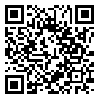Volume 22, Issue 3 (10-2019)
jha 2019, 22(3): 89-104 |
Back to browse issues page
Download citation:
BibTeX | RIS | EndNote | Medlars | ProCite | Reference Manager | RefWorks
Send citation to:



BibTeX | RIS | EndNote | Medlars | ProCite | Reference Manager | RefWorks
Send citation to:
Davodi N, Raissi S. Forecasting Model for Annual Drug Demand in Iran. jha 2019; 22 (3) :89-104
URL: http://jha.iums.ac.ir/article-1-3025-en.html
URL: http://jha.iums.ac.ir/article-1-3025-en.html
1- graduated in Industrial Engineering, school of Industrial Engineering, Islamic Azad University, South Tehran Branch, Tehran, Iran , nafisehdavodi@gmail.com
2- school of Industrial Engineering, Islamic Azad University, South Tehran Branch, Tehran, Iran,
2- school of Industrial Engineering, Islamic Azad University, South Tehran Branch, Tehran, Iran,
Abstract: (3662 Views)
Introduction: The analysis of the sale and use of drugs plays an important role in meeting the country’s drug demands in different therapeutic groups. In the meantime, the most important challenge is the conventional and empirical methods of predicting drug demand in the pharmaceutical industry. The current study aimed to examine the efficiency of the two proposed methods of Artificial Neural Network and Curve Fitting in comparison with the current conventional method, i.e., the Compound Annual Growth Rate model.
Methods: Pharmaceutical sales data (from March 20, 2000 to March 19, 2017) were aggregated and necessary treatments were applied. In the next step, the three aforementioned forecasting methods were used, and their efficiencies were compared by using the root mean square error.
Results: About 200 generic drugs were studied and 17 major therapeutic groups were identified. The sale prices for two years (from March 21, 2018 to March 19, 2020) were predicted. The calculated annual sales error for the artificial neural network and curve fitting from March 20, 2000 to March 19, 2017 was reported to be less than 7 percent for 11 years (of 13 years computed with Neural Network method) and 15 years (of 17 years computed with Curve Fitting method), respectively.
Conclusion: The Neural Network and Curve Fitting methods outperform the conventional Compound Annual Growth Rate model and in the case of low experimental data for drug sales, the Curve Fitting model acts more efficiently but with more input data, the Neural Network method acts more efficiently than the other two methods.
Keywords: Drug Demand Forecasting, Curve Fitting, Artificial Neural Network, Compound Annual Growth Rate Model, Price of Consumable Drugs
Type of Study: Research |
Subject:
Health Economics
Received: 2019/06/19 | Accepted: 2019/11/25 | Published: 2019/11/25
Received: 2019/06/19 | Accepted: 2019/11/25 | Published: 2019/11/25
Send email to the article author
| Rights and permissions | |
 |
This work is licensed under a Creative Commons Attribution-NonCommercial 4.0 International License. |






